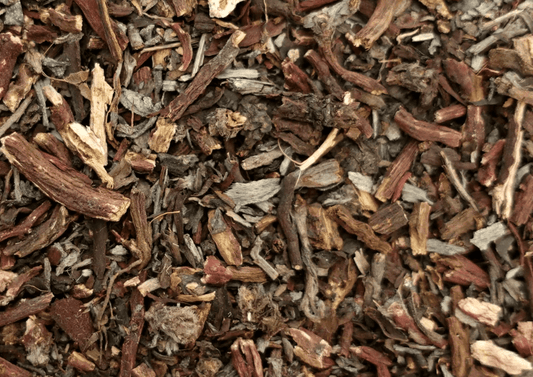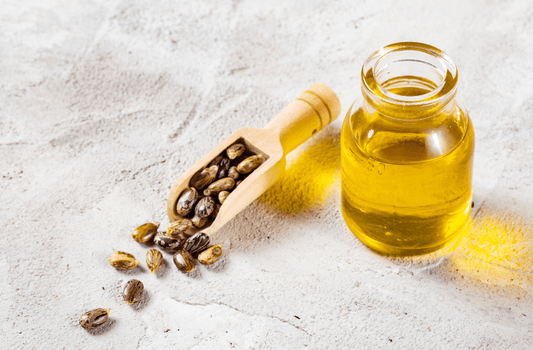What do you do when soap making goes wrong? Troubleshooting cold process soap can be difficult, but we've put together a list of the most common issues and how you can avoid them.
What causes crumbly, chalky soap?
This is a classic sign of lye heavy soap, i.e. there is too much sodium hydroxide for the quantity of oils. This means your soap will be harsh and potentially irritate and burn your skin.
This is usually caused by an inaccurate measurement somewhere along the line. Forgetting to zero your scales after putting your jug on, missing out one of your oils or sometimes inaccurate scales can be the cause.
Low battery power is a common factor of inaccurate scales so it is worth checking and replacing them regularly.
Lye heavy soap is difficult to remedy, especially for a beginner soap maker, as but the safest option is usually to dispose of the batch.
Go back and retrace your steps, recalculate your recipe and go again!
What causes soft, sticky soap?
This is the opposite of lye heavy soap. It is generally caused by a soap that has too high a % of unsaponified oils, often due to an inaccurate measurement.
There are exceptions, for example if your recipe is very high in water or unsaturated (liquid) oils, it may just need longer to harden up. 100% olive oil soap is a prime example and will often be cured for up to a year.
If that is not the case you will have a bar of soap that is safe but it will dissolve very quickly.

What Causes Dark Circles in Soap?
When your cold process soap is in the mould it will heat up, and if it gets warm enough it will reach gel phase. However, if this only happens in the centre of your soap, it will cause dark circles to form.
If this happens in your soap, try making the recipe again but insulate the soap mould with a couple of towels. This should help the soap reach full gel phase which should leave a good, consistent colour in the soap bars.
You could also try using single bar moulds instead of a loaf mould.
What Makes Soap Seize?
This is generally associated with some fragrance oils rather than essential oils. It is caused by the saponification process going into overdrive. If a fragrance oil is known for ‘accelerating trace’ this will be an indicator that it could be a culprit for causing seizing.
When this happens you'll notice your soap sets extremely quickly, and usually your only option is to spoon it into a mould as quickly as possible.
You can try and minimise the risks by working at a cooler temperature and adding your fragrance to your oils before your lye solution but either way be prepared to work fast. Failing that, you'll have to pick a different fragrance oil.
Soap can also appear to seize if the soap batter cools too much, causing the oils to start to solidify. If you're sure it isn't your fragrance oil that is causing your soap to seize, keep an eye on your temperatures.
Read more about what the best temperature is for soap making.
What Causes Soap Ricing?
This is another problem that is caused by some fragrance oils and occurs when the fragrance binds with harder oils in your soap recipe. Your soap batter then develops a lumpy ‘rice like’ texture whilst you are mixing.
You can try and blend the lumps out, but that can prove nigh on impossible.
Hot processing your soap mixture can sometimes save the batch.
Failing that, you'll have to research your fragrance oils and try again. Essential oils will not cause ricing so consider using them as an alternative.
What Causes Soda Ash?

This is every cold process soap maker's nemesis. Soda ash is a white powdery substance that you may see on the top of your soap. It is sodium carbonate and is caused by the sodium hydroxide reacting with the air before it has saponified.
It is harmless but can be unattractive. You can steam your soap to help remove it or when you start using it the soda ash will wash off.
There are a couple of things you can do to prevent it in the first place. Reducing your water content is the most effective method. Try using around 27/28% water.
You can also prevent soda ash forming in the first place by creating a barrier between the surface of your soap and the air. Spray the top of your soap with isopropyl alcohol straight after pouring and again a few minutes later.
You can also try carefully placing baking parchment on top of your soap straight after pouring, although this isn't practical for every design.
If you're still getting soda ash on your soap, you can always shave it off with a vegetable peeler.
What Causes Stearic Spots in Soap?
Small white, waxy spots throughout your soap are usually stearic spots. Some hard oils are high in stearic and palmitic acid which have a high melting point.
Soaping at a low temperatures can cause them to begin to solidify before saponifying, and stearic spots form.
Try your recipe again at a higher temperature and ensure your hard oils are fully melted before using them.
What Causes Glycerin Rivers in Soap?
Are you seeing silvery, translucent, lines or pools when you cut your bars? Glycerin is a naturally occurring by-product of saponification and a great thing to have as it is brilliant for your skin but occasionally the glycerin overheats and causes lines through your soap.
It is completely harmless and your soap is still good to use. Reducing your water down to around 27/28% and working at a lower temperature will help to avoid glycerin rivers.
What Causes Soap Not Coming to Trace?
Some recipes made solely of thin liquid oils, like olive oil soap bars, can take longer to come to trace. But, if you've been blending for an hour and your soap still hasn't come to trace, something has gone wrong!
Double check your recipe, did you add too much water, or not enough lye? If you're sure about those, check the soap temperature, is it too cold?
Use a good light to look for a very slight trace. If there's a small trail left behind when soap is drizzled over the top, it is worth pouring it and trying to cure the batch.
Soap Coming to Trace too Fast?
Try reducing the temperature of your soap or reducing the amount of time that you blend with a stick blender.
Some ingredients like honey will accelerate trace, and some fragrance oils can cause this too. Try reducing the amounts of these in your recipe
What Makes Soap Oily on Top?
This is usually caused by the soap separating in the mould because it wasn't properly blended. You can try scraping the soap back into your pot and blending it some more.
What Causes Soap to Set Unevenly?
This is caused by letting the soap cure on an uneven surface. Make sure you check your curing space with a spirit level!
What Causes Soap Cracking or Bubbling?
This is often caused by soap overheating, especially if your recipe includes milk, juice or alcohol. If you're using any of those ingredients, start with them frozen to a slush and don't insulate your soap while it is curing.
These are the most common issues you will encounter when making cold process soap. In most cases your soap may not be perfect or as ‘pretty’ as you would have liked but with the exception of lye heavy soap it will still be safe to use.
As your soap making develops you will learn what works and what doesn’t with different recipes and ingredients and most likely have your own preferred methods and techniques for achieving that perfect bar of soap.
Continue reading
Hopefully you've found the answer to your cold process soap making troubles! Why not continue your soap making journey?
- Interested in hot process soap making? Try our easy hot process soap recipe
- Want to learn more about essential oils? Take a look at our essential oils for soap making blog post.
- Looking for a new cold process soap recipe? Try our aloe vera juice cold process soap recipe.
Did this help solve your cold process soap problems? Comment below and let us know.



